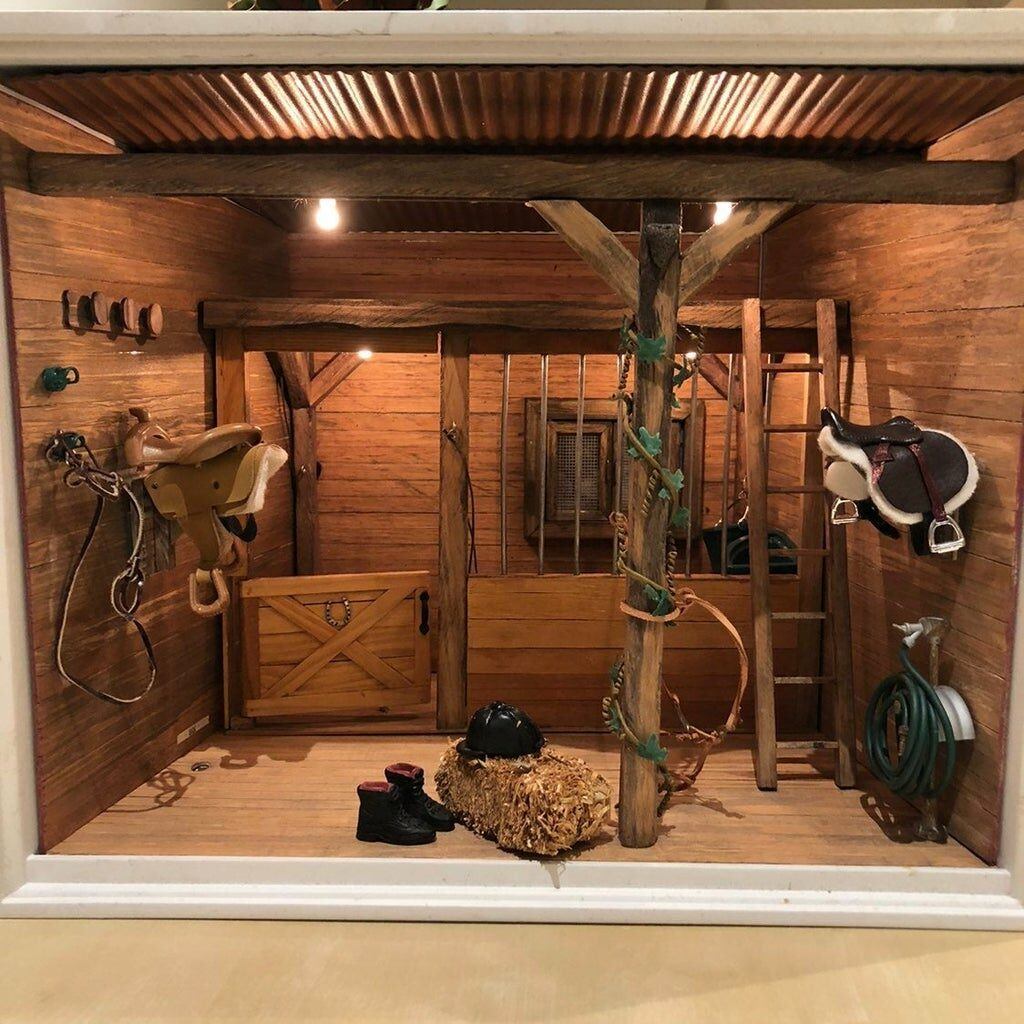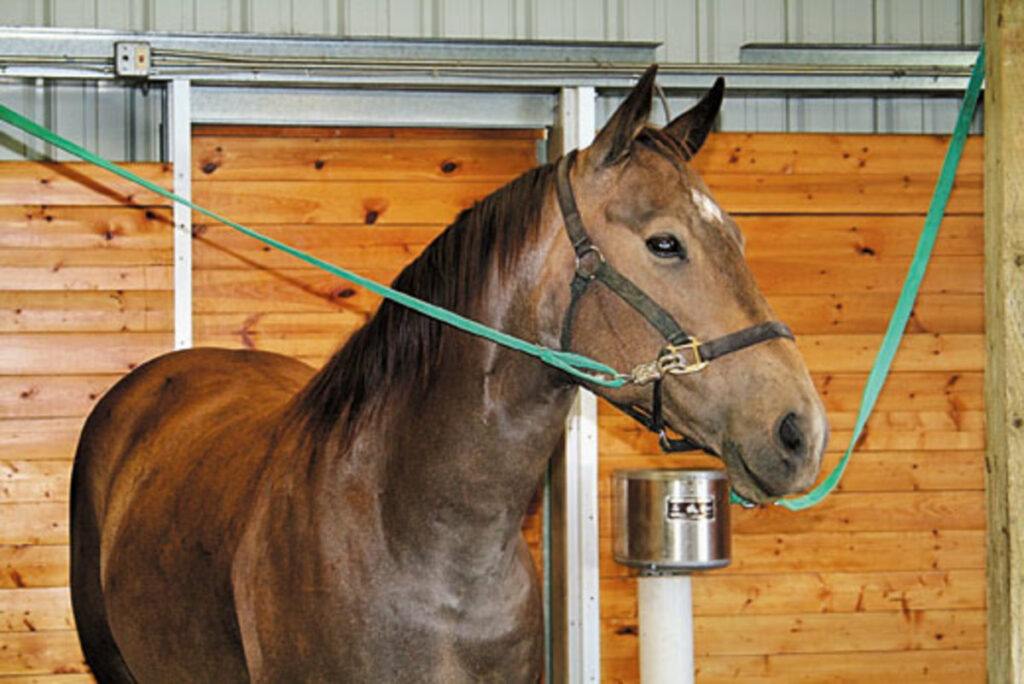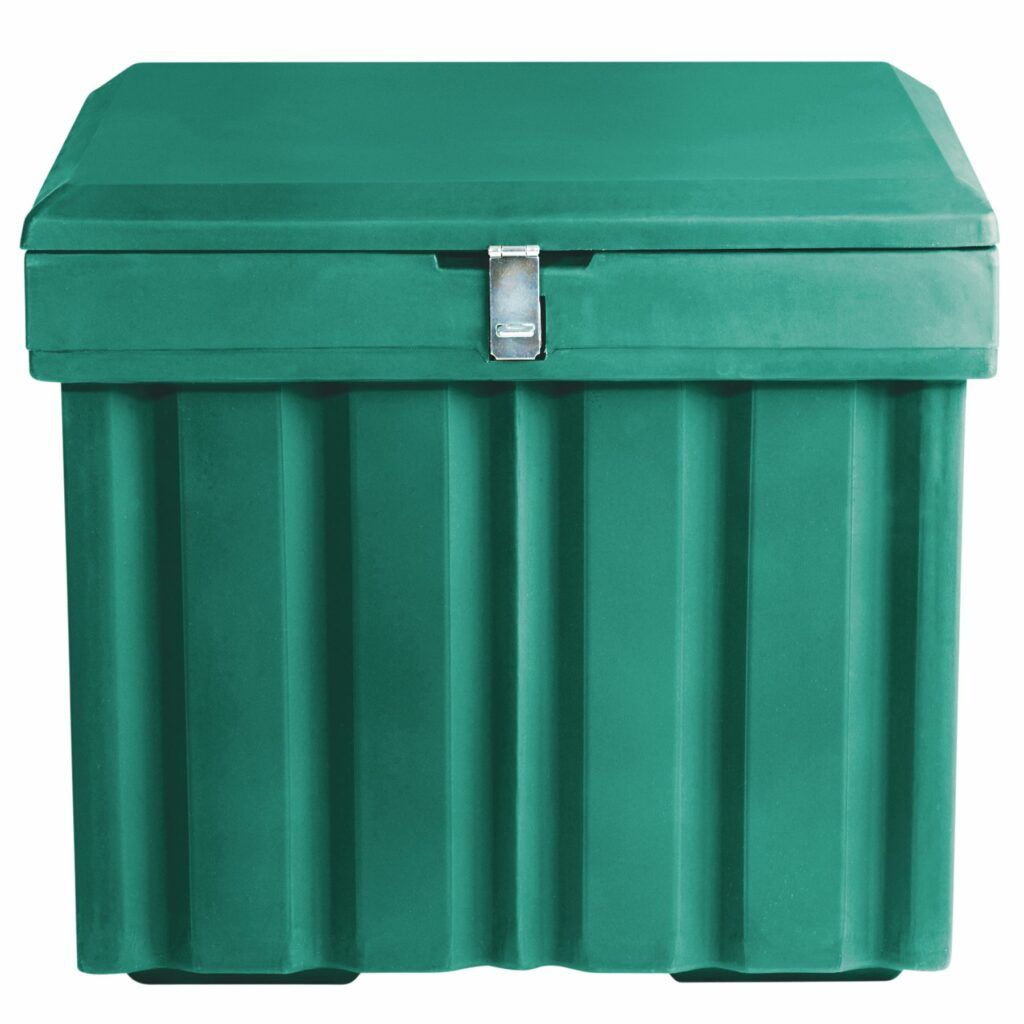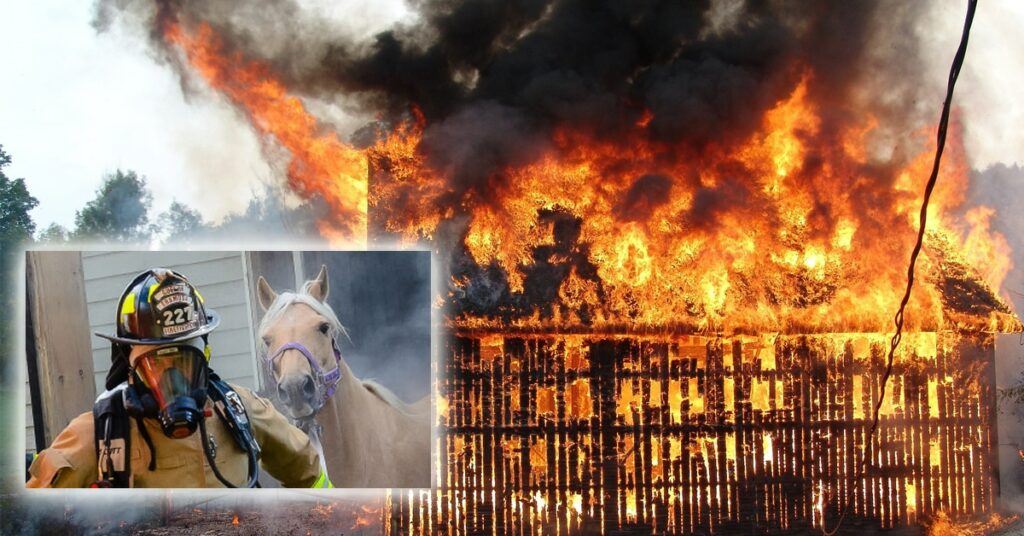There are many horse barn safety rules everyone should follow, but some rules you might not think of as often as others. As owners and managers of horses, it’s our responsibility to be aware of dangers lurking in the barn as well as when we’re riding.
Some things are obvious…so obvious that we don’t even see them as dangerous – until something happens. Others are nearly impossible to miss. This article will discuss five safety rules everyone should know and follow.
Burning Down The Barn
Horse Barn Safety Rule #1 – No Smoking
No smoking. Period.
Smoking should not be permitted even remotely close to a barn and certainly not inside one. Keep buckets of sand near all barn entrances (for cigarette butts) with visible No Smoking signs posted.
Fire extinguishers in proper working order should be located at every entrance.
If your barn is large with long shedrows, place an extra fire extinguished halfway down the walkway. A barn fire is one of the most devastating disasters that can happen. Make this your number one rule and enforce it – with no exceptions for anyone.
Horse Barn Safety Rule #2 – Tie Smart
Never tie your horse without a way to release fast.
One of the best ways to tie a horse is with cross-ties equipped with safety release snaps. If cross-ties aren’t available, never tie a lead rope with a hard and fast knot. Only use a quick release knot. This is a knot that can be untied even with a big horse pulling against it.
It’s crucial to be able to untie a horse quickly in a situation where a horse fights being tied and falls. A quick release knot could be the difference between your horse living or dying in a falling accident.
Additionally, a flailing, panicked horse endangers anyone who gets near to try to help it. This dangerous situation is easily avoided by tying your horse in a safe and sensible manner.
Horse Barn Safety Rule #3 – Be Prepared
Be prepared.
Always keep a halter and lead rope hung right outside each horse’s stall. In the event of an emergency, you want to be able to get horses out of the barn as quickly as possible. Having to search for a halter and lead rope could cost a horse its life in dire situations. It could even endanger your own life.
Horse Barn Safety Rule #4 – No Chow Downs
If grain is stored in the same area where horses are stalled, make sure it’s not in a container a horse could open.
Grain that’s easily accessible will go stale and draw rodents, but worse, it can also draw an escaped horse. And it’s an incentive for any horse who knows where the container that holds his favorite thing is located, and fancies himself as a Houdini, to try to get to it.
We all know of at least one horse that’s a master at freeing himself from stalls and pastures.
You don’t want that horse opening the grain container and going on an eating fest. A grain binge can lead to colic or laminitis. If grain must be stored where horses are stalled, secure the lid so it won’t come off even if the container is turned over.
A metal trash container is a good option when you securely tie the lid to the handles.
Horse Barn Safety Rule #5 – Keep It Clean

Keep the barn clutter and garbage free.
Remove items that could trip a horse or person, such as loose baling twine, lead ropes, wash hoses, extension cords, etc. from the barn floor. Keep isles clear of tack trunks, tack, stall cleaning tools, trash, spare buckets, etc.
Check floors for items you wouldn’t expect, a loose nail or screw can easily puncture a hoof…or go through your boot (you are wearing boots…right?).
It’s amazing how items such as these just seem to appear on the floor.
Remove any chemicals that someone might have left behind that could be harmful to humans or animals. Don’t forget that where there’re horses, often there’s a dog or two and some barn cats. Watch out for these animals too.
Place a secure trash can out of the way but accessible and make sure everyone uses it and not the floor for trash disposal.
But That’s Not All (Extra Tips)
These, and many more, are sensible horse barn safety rules that everyone should follow.
But there’s one more that could turn out to be the most important of all if you ever find yourself in an unexpected disaster in which the very lives of your horses are on the line. No list of rules is complete without knowing how to prepare for the very worst situations that could befall a horse barn.
And that brings us to a bonus barn rule that needs to be implemented and understood by everyone who owns a horse or stables horses for others.
That rule is having a plan.
Tip #1 – Emergency Planning
You need to have a plan and know how to execute it if a disaster strikes, or is about to strike, your barn.
You should know what to do if there’s an event endangering your horses. Not all disasters are the same. If you have warning that an event is coming, you have more time to get your horses to safety.
At the least, whether you will trailer your horses to another location or move them to a different part of your property, make sure you have at least 3 days food and water available for them.
Tip #2 – Keep These at Your Fingertips
In addition, make sure you have at the ready:
- First aid kits for people and animals
- Health papers (if you’re trailering your horses, you may need them)
- Working flashlights
- Battery operated radio
- Extra batteries
- Extra halters and lead ropes (you should always have a few stored somewhere other than the barn too)
If a disaster is imminent, be aware of the following.
Human safety comes before everything else. Never forget that a panicked horse can become dangerous to anyone around it. And that includes the gentlest, elderly granny horse. Horses are flight animals, and a panicked horse only wants to get away at any cost.
Tip # 3 – Not All Horses React The Same
Not all horses will react the same in an emergency situation.
Some horses can be haltered and led out of the barn. Others might be so frightened that you can’t get near them. Your only option, in the case of a panicked horse, may be to open the doors and try to herd them out of the barn.
By the way, if you have a naturally panicky horse, you can buy horse calming supplements.
Also, if there are stallions, you will need to know how to manage getting them out. Stallions present an entire set of problems on their own. If you have one or more stallions, be prepared to get them out safely and separately.
If there’s a barn fire, you need to get the horses far enough way that they aren’t breathing in smoke. Health issues can arise from smoke inhalation.
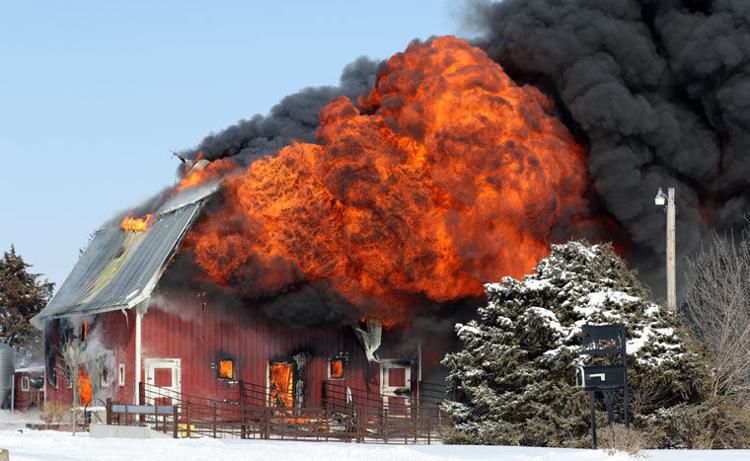
Never underestimate a panicked horse’s likelihood of making a bad decision in an emergency. A horse feels safe in its stall. A horse that’s been removed from a burning barn could run back to the one place it feels safe, its stall.
After all, they are creatures of habit. And while you would expect a horse to want to run from a fire, it’s not out of the question that they would run back into a blazing barn.
Once you get horses out of a burning barn, the further you can get them from the barn, the better.
Tip #4 – Prepare Others In Advance
Make sure everyone knows what to do if the worst happens. And if the unthinkable develops in your rescue efforts, your own safety and life comes first.
Never do anything stupid in an effort to get your animals out. Have a plan, make sure it’s workable, give it a dry run if you want, then if a disaster strikes, you have the best chance of saving your horses without harming yourself in the process.
Horse Barn Safety Rules Conclusion
While there’re lots of rules you could enact for your barn, these six will go a long way toward keep people and horses safer.
Make signs and post them for everyone to know and follow. Have your emergency supplies ready. If you need them, you’ll have them. You don’t always get a warning that disaster is about to strike. Flash floods and fires can spring up in a moment. Be ready.
Enforce your rules.
Then if despite your best efforts, something does happen, you’ll stand your best chance of things working out for the better.
Was this post helpful? If you’re going on a trail ride in the winter, you may want to read my post, “How to Dodge These Scary Winter Trail Riding Hazards”. I’d love to hear your comments below.

